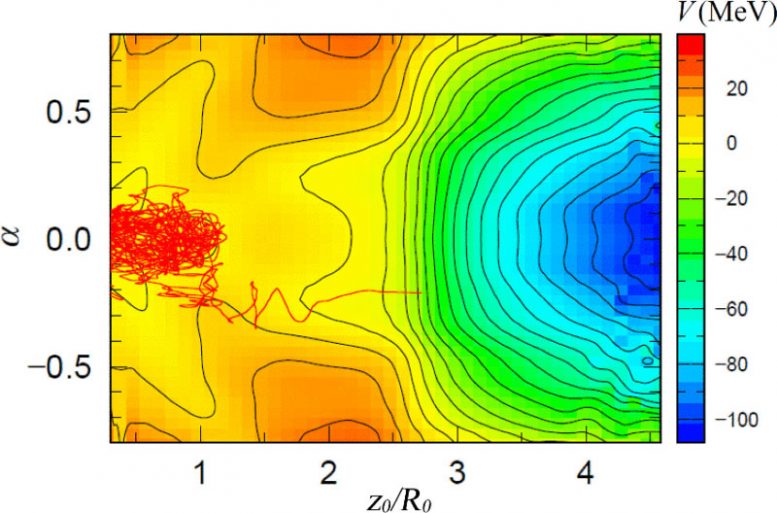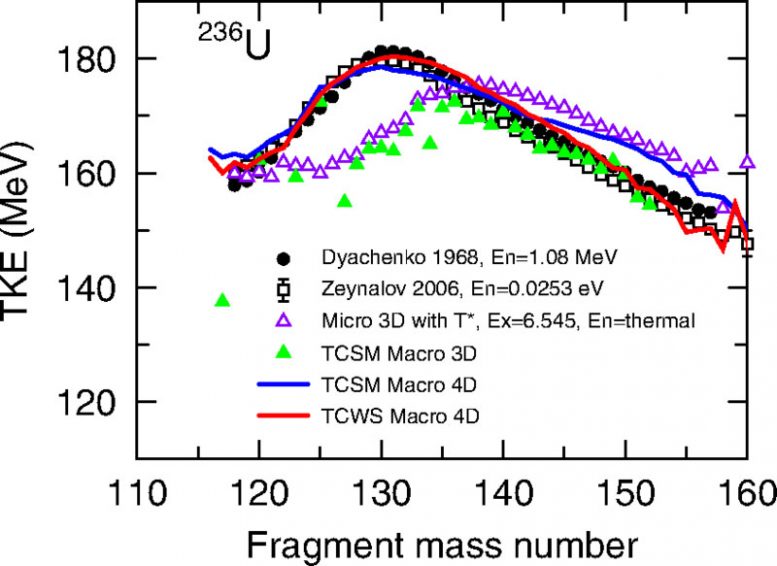In our researchers’ case, the generation of energy is observed from the nuclear fission of Uranium-235 (U-235). As a neutron is bombarded into the U-235 nucleus, it produces a Uranium-236 (U-236) nucleus and gives it extra energy to help it split into two separate fragments. The excitation energy causes the fragmentation, generating atomic energy (see Figure 1). However, predicting this energetic interaction is difficult, so scientists use simplified models to represent the fragmentation of the nucleus. The Langevin model represents the behavior of the dynamic motion of a fissioning nucleus. Previously established Langevin models often considered three dimensions to describe the shape of the nuclei. These included a deformation factor, which describes the various geometries of the two nuclear fragments deformed as a result of fission. Chikako Ishizuka and Satoshi Chiba at Tokyo Tech, leading this research group, have found that there is an additional factor that influences prediction within a Langevin model, while focusing on U-236. The team’s fourth factor considers the deformation of the two separate fragments, rather than assuming the two fragments have the same deformation factor. Unlike previous 3D Langevin models, the researchers have enhanced the Langevin model to four dimensions so that it can consider the thermal energy of nuclear fragments and consider the individual shape of the fission fragments by taking into account that the heavy and light elements of the fragments behave differently. The results appear to fit empirical data of nuclear fission better than previously established models. Especially no theoretical models have not reproduced the kinetic energy i.e. the thermal energy of nuclear fission, with predictive power. As seen in Figure 2, the resulting kinetic energy data of the 4D model fits well with observed measurements, in comparison with previous models (shown with the purple and green symbols) without special assumptions. The Langevin 4D model improves how we can predict low-energy fission and can be used for various nuclei such as poisonous nuclear wastes populated by successively absorbed neutrons starting from uranium. The authors of this work are continuing to develop new applications, with particular emphasis on a future 5D dynamical model that will improve predictive accuracy even further. Reference: “Four-dimensional Langevin approach to low-energy nuclear fission of 236U” by Chikako Ishizuka, Mark D. Usang, Fedir A. Ivanyuk, Joachim A. Maruhn, Katsuhisa Nishio and Satoshi Chiba, 22 December 2017, Physical Review C.DOI: 10.1103/PhysRevC.96.064616

